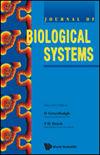收缩期心力衰竭脑血流速率自动调节机制相互作用的计算模拟
IF 1.5
4区 数学
Q3 BIOLOGY
引用次数: 0
摘要
本研究建立了包括体循环、脑血管、全身小动脉阻力控制、心率控制、脑自动调节机制和脑CO2反应性在内的集总参数模型,模拟健康和心力衰竭情况。在健康心血管系统模型中,所有的控制机制都与模型相关。在模拟心力衰竭病例时,从模型中删除了所有控制机制。然后,将脑自动调节和脑CO2反应机制与模型联系起来。最后,将全身动脉阻力和心率控制机制与模型联系起来。此外,还进行了蒙特卡罗分析,以确定用于模拟健康和心力衰竭状况的控制参数范围。结果表明,与单独研究脑循环血流速率相比,通过相互作用的模型来模拟脑循环血流速率更为准确。本文章由计算机程序翻译,如有差异,请以英文原文为准。
COMPUTATIONAL SIMULATION OF THE INTERACTION AMONG AUTOREGULATION MECHANISMS REGULATING CEREBRAL BLOOD FLOW RATE IN SYSTOLIC HEART FAILURE
In this study, a lumped parameter model which includes systemic circulation, cerebral blood vessels, systemic arteriolar resistance control, heart rate control, cerebral autoregulation mechanisms and cerebral CO2 reactivity was developed to simulate healthy and heart failure conditions. In the healthy cardiovascular system model, the results were obtained with all control mechanisms connected to the model. Whilst heart failure cases were simulated, all control mechanisms were removed from the model. Then, cerebral autoregulation and cerebral CO2 reactivity mechanisms were connected to the model. Lastly, systemic arteriolar resistance and heart rate control mechanisms were connected to the model. Also, Monte Carlo Analysis was performed to determine the range of parameters controlled for simulations of healthy and heart failure conditions. The results showed that blood flow rate in cerebral circulation can be simulated more accurately by modeling interaction among autoregulatory mechanisms rather than studying separately.
求助全文
通过发布文献求助,成功后即可免费获取论文全文。
去求助
来源期刊
CiteScore
2.80
自引率
12.50%
发文量
31
审稿时长
1 months
期刊介绍:
The Journal of Biological Systems is published quarterly. The goal of the Journal is to promote interdisciplinary approaches in Biology and in Medicine, and the study of biological situations with a variety of tools, including mathematical and general systems methods. The Journal solicits original research papers and survey articles in areas that include (but are not limited to):
Complex systems studies; isomorphies; nonlinear dynamics; entropy; mathematical tools and systems theories with applications in Biology and Medicine.
Interdisciplinary approaches in Biology and Medicine; transfer of methods from one discipline to another; integration of biological levels, from atomic to molecular, macromolecular, cellular, and organic levels; animal biology; plant biology.
Environmental studies; relationships between individuals, populations, communities and ecosystems; bioeconomics, management of renewable resources; hierarchy theory; integration of spatial and time scales.
Evolutionary biology; co-evolutions; genetics and evolution; branching processes and phyllotaxis.
Medical systems; physiology; cardiac modeling; computer models in Medicine; cancer research; epidemiology.
Numerical simulations and computations; numerical study and analysis of biological data.
Epistemology; history of science.
The journal will also publish book reviews.

 求助内容:
求助内容: 应助结果提醒方式:
应助结果提醒方式:


